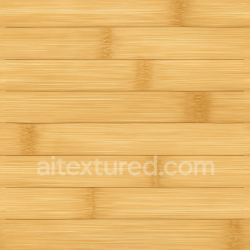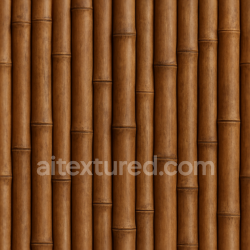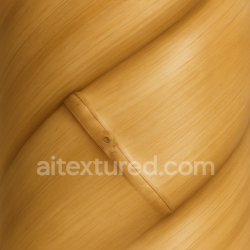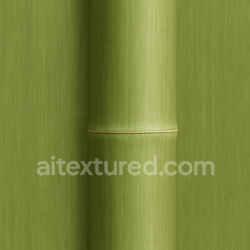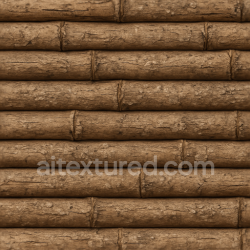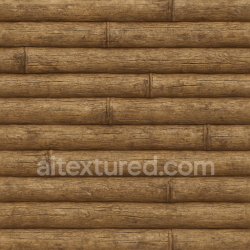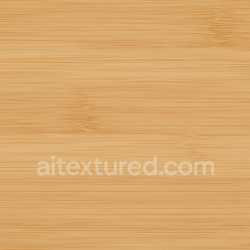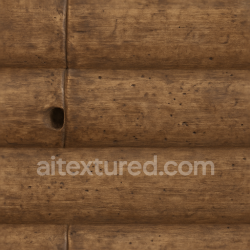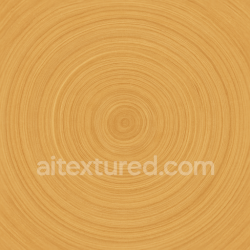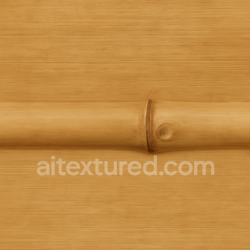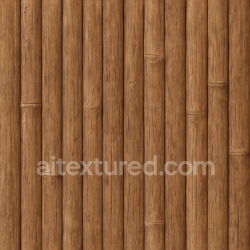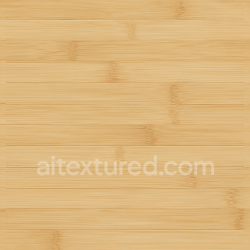Comprehensive Guide to Seamless PBR Mud Textures for Realistic 3D Surfaces
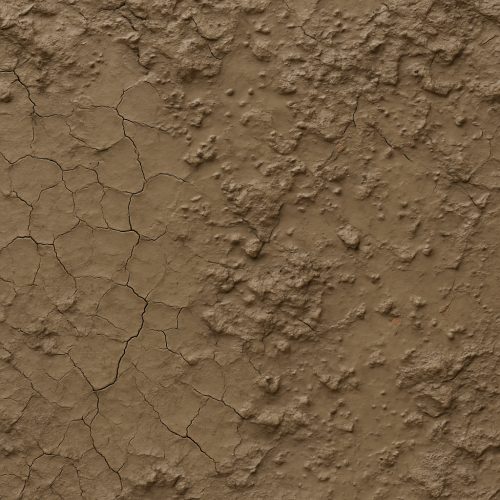
Mud textures occupy a crucial niche within physically based rendering (PBR) workflows, serving as a complex and highly variable surface type that challenges both texture authors and shader engineers. Their significance extends across multiple disciplines, including real-time applications such as games, where environmental storytelling often hinges on believable ground and terrain materials; architectural visualization, where accurate site context and natural elements contribute to immersion; and visual effects, where photorealism demands nuanced surface detail. Unlike many other natural materials, mud embodies a multifaceted interplay of physical and chemical properties—moisture levels, sediment composition, organic inclusions, and particle size distributions—all of which manifest visually in ways that require careful consideration during texture creation and shader setup.
From a PBR perspective, mud cannot be effectively represented by a single, static set of texture maps; rather, it necessitates a layered understanding that encompasses subtle gradations of surface reflectance, microgeometry, and subsurface scattering phenomena. The base color (albedo) of mud is heavily influenced by mineral content and organic matter, resulting in a palette that ranges from dark brown to reddish hues, often punctuated by lighter patches caused by drying or mineral deposits. These chromatic variations must be captured with precision, as they inform the viewer’s perception of wetness and composition. For instance, wetter mud tends to exhibit deeper, richer tones with reduced diffuse reflectance, whereas drier mud appears lighter and more matte due to increased scattering and surface roughness.
Roughness maps are particularly critical in mud texturing, as the surface roughness dynamically shifts across different states of moisture and compaction. Freshly disturbed or wet mud surfaces exhibit lower roughness values, reflecting more specular highlights and subtle glossiness caused by thin films of water or organic oils. Conversely, dry or cracked mud surfaces possess higher roughness, scattering light diffusely and minimizing specular reflections. Capturing this variability demands high-resolution roughness maps that accommodate both macro and micro-roughness features, often driven by physically accurate height or normal maps that simulate the unevenness and particulate nature of mud.
Normal and height maps play an indispensable role in conveying the microgeometry of mud surfaces. Natural mud is rarely flat; it consists of myriad small-scale bumps, fissures, and clumps formed by the aggregation of fine particles and organic debris. Accurately authored normal maps derived from high-resolution displacement or sculpted meshes introduce the tactile detail necessary for convincing light interaction. Height maps, when integrated with parallax occlusion or tessellation shaders in engines like Unreal Engine or Blender’s Eevee and Cycles, enable dynamic depth perception that enhances realism without excessive polygonal complexity. These maps must be carefully calibrated to maintain consistency across tiling units, preventing obvious repetition or unnatural surface artifacts.
Ambient occlusion (AO) textures further augment mud shading by accentuating crevices and depressions created by particle aggregation and erosion patterns. In wet mud, AO effects can be softened to simulate slight subsurface scattering or water pooling, while in dry mud, sharper occlusion enhances the perception of surface roughness and fragmentation. AO maps are often baked from high-poly scans or procedural generation workflows, then refined to balance between physical accuracy and artistic intent. Their integration into the shader pipeline complements roughness and normal data, collectively producing a nuanced response to environmental lighting.
Though metallic maps are generally inapplicable for natural mud due to its non-metallic composition, there are edge cases, such as mud mixed with mineral ores or metallic contaminants, where subtle metallic values may be introduced to simulate reflective particles. However, these must be employed judiciously and with physical justification to avoid breaking the material’s realism. When metallic data is irrelevant, it is typically set to zero to maintain shader consistency.
The acquisition and authoring of mud textures demand both photographic reference and procedural augmentation. High-quality photogrammetry scans of real mud surfaces offer a valuable starting point, capturing genuine variations in color, roughness, and microgeometry. However, raw scan data often requires extensive cleanup and retouching to remove noise, correct lighting inconsistencies, and optimize tiling behavior. In scenarios where tileability is essential—such as large terrain systems in open-world games—textures must be carefully edited or procedurally generated to minimize visible seams and repetitive patterns. Techniques like multi-channel blending, detail masks, and stochastic noise overlays are frequently employed to introduce micro-variation that disrupts uniformity.
Calibration of mud textures within PBR pipelines is a critical step. Ensuring that albedo values remain within physically plausible ranges prevents energy loss or gain that can compromise the material’s interaction with light. Reflectance measurements or calibrated photographic workflows can help maintain accurate color fidelity, particularly when representing wet versus dry states. Similarly, roughness and normal map intensities should be adjusted to match real-world observations or reference photographs under controlled lighting. Shader parameters must be tuned to accommodate environmental factors such as wetness transitions, often implemented via layered materials or dynamic blending between texture sets in engines like Unreal Engine’s material editor or Blender’s node-based shader system.
Optimization remains a practical concern, especially in real-time applications. Mud textures frequently require high-resolution maps to capture fine detail, but memory constraints necessitate careful balancing. Utilizing techniques such as texture atlasing, mipmapping with anisotropic filtering, and compression formats optimized for roughness and normal data can reduce resource usage without sacrificing perceptible quality. Additionally, leveraging engine features like virtual texturing or runtime texture streaming allows large terrain systems to maintain high visual fidelity while managing performance budgets.
In engine usage, both Unreal Engine and Blender provide robust tools for mud texture integration. Unreal’s physically based material system supports layered materials and parameter-driven wetness effects, enabling artists to simulate realistic mud transitions from dry to saturated states dynamically. Its support for tessellation and displacement can further enhance surface detail where hardware permits. Blender, with its Cycles and Eevee render engines, offers node-based shader authoring that facilitates complex layering of albedo, roughness, normal, and height inputs, alongside procedural noise generation for micro-variation. Both platforms encourage iterative refinement and real-time previewing, crucial for achieving believable mud materials that respond convincingly to diverse lighting and environmental conditions.
In summary, mud textures in PBR workflows represent a synthesis of detailed surface characterization, physically accurate material response, and practical optimization strategies. Their successful implementation hinges on a comprehensive understanding of the interplay between moisture, particulate composition, and light scattering, as well as mastery over texture acquisition, calibration, and engine-specific shader authoring. This foundation sets the stage for advanced techniques that address dynamic environmental effects, complex layering, and integration within sprawling natural landscapes.
Capturing authentic mud surfaces for physically based rendering workflows demands a rigorous approach to data acquisition, as mud exhibits complex visual and tactile characteristics that vary significantly with moisture content, composition, and environmental conditions. Photogrammetry and 3D scanning have emerged as the primary techniques for obtaining high-fidelity texture data, each offering distinct advantages and challenges when applied to the inherently variable and often unstable medium of mud.
Photogrammetry leverages multiple overlapping photographs taken from diverse angles to reconstruct detailed surface geometry and texture maps. For mud, the key to success lies in carefully controlling capture parameters to preserve subtle surface details such as fine cracks, clumps, and wetness-induced reflectance variations. Capturing mud in various states—from freshly disturbed and highly saturated to partially dried and cracked—ensures a versatile texture set that can be blended or layered within a PBR shader to simulate temporal changes. When photographing mud, diffuse, specular, and subsurface scattering properties can change dramatically with moisture levels, so it is crucial to maintain consistent environmental conditions or systematically document them for later calibration.
The choice of lighting during photogrammetry acquisition significantly impacts the quality of albedo and roughness maps. Overcast or diffused natural light is generally preferred because it minimizes harsh shadows and specular highlights, which can cause artifacts in the base color capture. However, to accurately capture the roughness and specular response, additional controlled lighting setups or separate specular/directional captures may be necessary. Employing a polarization filter on the camera lens helps reduce unwanted reflections and glints from wet mud surfaces, providing cleaner albedo data. These polarized images also assist in isolating the diffuse component from specular reflections, which is essential for generating accurate roughness and metallic maps—though metallic values for mud are generally negligible, subtle mineral inclusions might require attention.
High-resolution imagery is paramount to resolving micro-variations such as granular aggregates, fissures, and embedded debris. A multi-scale capture approach is beneficial, combining wide-area scans for macro-tiling with close-up shots of localized features. This hierarchical data acquisition facilitates the creation of seamless tileable textures enriched with micro-detail normal and height maps, enhancing realism in real-time engines like Unreal Engine or offline renders in Blender’s Eevee and Cycles. Ensuring sufficient overlap and parallax between images—ideally 60-80%—is critical for robust dense point cloud generation and mesh reconstruction, which underpin the subsequent baking of normal, ambient occlusion (AO), and height maps.
For 3D scanning, active methods such as structured light or laser scanning can complement photogrammetry by capturing precise geometry of complex mud surfaces, particularly when dealing with reflective wet areas that challenge purely photographic methods. Scanners with high spatial resolution can capture micro-topography with sub-millimeter accuracy, enabling displacement or tessellation workflows downstream. However, active scanning of mud requires stabilizing the surface to avoid deformation during the scan, which might involve casting molds or using gels to temporarily fix the substrate. This process aids in acquiring reliable height data that can be baked into height or parallax maps for PBR shaders, improving depth perception in close-up views.
Calibration of all capture devices is a non-negotiable step to maintain color fidelity and geometric accuracy. For photogrammetry, using color calibration charts and reference materials within the scene allows for post-processing color correction, ensuring that the albedo maps reflect true diffuse reflectance rather than camera or lighting biases. Similarly, lens distortion correction and precise camera metadata recording improve the alignment and scaling of reconstructed models. In scanning workflows, regular calibration of the scanner’s projector and sensor ensures dimensional accuracy and reduces noise in the mesh data.
Post-processing pipelines integrate the raw photogrammetric or scanned data into usable PBR texture sets. Mesh cleanup involves removing noise, filling holes, and retopologizing if necessary to facilitate efficient baking. Baking workflows extract normal maps from high-resolution meshes to low-poly proxies, while AO maps derived from ambient occlusion calculations add soft shadowing that enhances surface detail perception in real-time engines. Height maps generated from geometry displacement facilitate advanced shader effects such as parallax occlusion mapping or tessellation, vital for mud surfaces where depth cues enrich tactile realism. Roughness maps, often derived from a combination of reflectance data and empirical tweaks, encode the specular scattering behavior, which varies notably with moisture content—wet mud exhibits lower roughness and higher specular intensity, while dry, cracked mud yields rougher, more diffuse reflections.
Tiling and micro-variation pose particular challenges when authoring mud textures. Natural mud rarely exhibits uniformity over large areas; thus, designers must leverage captured micro-detail layered over tileable base textures to prevent visual repetition. Techniques such as blending multiple photogrammetric captures, procedural noise masks, and detail normal overlays help introduce subtle randomness. In engines like Unreal Engine, using layered materials with vertex painting or masks can simulate patches of different mud conditions, seamlessly integrating the captured texture variations. Blender users can exploit its node-based material system to combine image textures with procedural displacement and roughness modulation, crafting bespoke shaders that respond dynamically to lighting and camera proximity.
Optimization for real-time use requires balancing fidelity and performance. High-resolution texture sets must be carefully downscaled and mipmapped, with normal and height maps compressed using formats like BC5 or BC7 to retain detail while minimizing memory footprint. Baking AO and curvature maps into the texture set reduces runtime shading complexity. Additionally, incorporating texture atlases or virtual texturing can streamline asset management and rendering efficiency, particularly in large environments featuring extensive mud coverage.
Ultimately, the fidelity of mud PBR textures hinges on meticulous acquisition workflows that respect the material’s dynamic nature. Combining photogrammetry’s rich color and geometry reconstruction with precise 3D scanning’s accuracy enables creation of comprehensive texture sets that drive realistic shading in modern engines. Attention to lighting, calibration, and post-processing ensures the captured data translates into physically plausible albedo, roughness, normal, AO, and height maps. By embracing micro-variation and tiling strategies, artists can achieve visually convincing mud surfaces that respond authentically across diverse lighting conditions and viewing angles, fulfilling the demanding requirements of contemporary PBR pipelines.
Creating realistic and physically accurate mud textures for PBR workflows demands a nuanced balance between procedural generation and photographic editing techniques. Both approaches offer distinct advantages and challenges in capturing the inherent complexity of mud surfaces, including their wetness gradients, particulate sediment layers, and irregular splatter patterns. Achieving seamless tileability while preserving micro-variation and adhering to physically based rendering principles is crucial to ensure that these textures integrate convincingly within real-time engines such as Unreal Engine or offline renderers like Blender’s Cycles.
Procedural authoring of mud textures typically begins by establishing a base height or displacement map that encapsulates the uneven and granular nature of mud. This height map is foundational; it informs the generation of normal maps and ambient occlusion (AO) maps essential for simulating detailed surface irregularities and subtle shadowing effects. Software like Substance Designer excels in this domain, as it allows node-based layering of noise functions and shape generators—such as Perlin, Cellular, or Worley noise—to produce heterogeneous sediment distributions and cracked mud patterns. A key procedural strategy involves combining multiple noise layers with varied scales and thresholds to replicate the multi-scale granularity of mud, from fine silt to larger clumps or pebbles embedded in the soil.
In the procedural workflow, controlling wetness gradients is a critical and challenging aspect. Mud often exhibits spatial variations in moisture content, which affects both its albedo and roughness. Procedurally, this can be approximated by generating weight masks that simulate wet and dry regions. For example, a gradient or radial mask can be applied over the base noise to darken the albedo in wetter areas, mimicking the light-absorbing quality of moist soil. Correspondingly, roughness maps require fine-tuning: wet mud tends to be less rough due to surface water films, whereas dry mud exhibits higher roughness from its granular texture. Using procedural blending nodes, roughness values can be modulated according to the same wetness mask, ensuring that the albedo and roughness channels remain physically consistent.
Besides base height and roughness control, procedural splatter patterns are instrumental for realism, especially when simulating mud splashed onto surfaces such as tires, boots, or walls. These splatters can be generated using particle distribution nodes or shape instancing combined with noise-based masks to produce irregular, semi-random shapes. By varying the scale, opacity, and edge hardness of these splatters, one can replicate natural mud deposition patterns. The splatter elements should be integrated into the base texture’s height and normal maps by adding subtle displacement and normal perturbations, enhancing the tactile realism under dynamic lighting.
Photographic editing complements procedural methods by providing authentic color and detail information that can be challenging to replicate algorithmically. High-resolution photo captures of mud surfaces, ideally taken under controlled lighting conditions and with color calibration targets, serve as excellent albedo sources. These photographs often reveal subtle color shifts caused by organic matter, mineral sediments, or moisture content that procedural noise may lack. Using advanced image editing software such as Adobe Photoshop or Affinity Photo, artists can extract base color maps by desaturating and correcting color balance, isolating the mud from extraneous elements like grass or debris.
From photographic data, roughness and height maps can be derived through a combination of manual and automated processes. Height maps typically require converting luminance information into grayscale displacement, refined with high-pass filters and edge detection algorithms to accentuate fine cracks and clumps. These maps then inform normal map generation through tools like xNormal, CrazyBump, or built-in filters in Substance Designer/Painter. Ambient occlusion maps can be baked from 3D scans or approximated from grayscale photos using curvature and shadow extraction filters, adding subtle contact shadows that complement PBR shading.
A central challenge in photographic workflows is achieving seamless tileability. Mud surfaces rarely exhibit repetitive patterns, so photographic textures must be carefully edited to avoid visible seams. Techniques such as offset filters combined with clone stamping, patch blending, and frequency separation allow artists to break up repeating features while maintaining the natural grain and variation inherent to mud. In some cases, a hybrid approach is optimal: procedural noise layers can be overlaid or blended with photographic textures to introduce stochastic variation and mask repetition artifacts. This layered approach also facilitates the integration of additional details, such as sediment layers or fine particulate matter, which are sometimes subdued or absent in photographs.
When authoring mud textures for PBR, the calibration of channel values to physical units is essential for consistent lighting response. Albedo values should avoid being too dark or saturated, as mud tends to absorb light strongly but reflects subtle color variations from organic and mineral content. Roughness values must accurately represent the wetness state, with wet mud approximating roughness around 0.2–0.4 and dry mud closer to 0.6–0.9 depending on grain size and compaction. Height map ranges should be normalized to realistic displacement scales, typically in the millimeter range, to prevent exaggerated parallax or inconsistent shadowing in engine tessellation or parallax occlusion mapping.
Optimization is an important consideration, especially for real-time applications. Mud textures often require multiple maps at 2k or 4k resolutions to capture fine detail, but these can be expensive in memory and bandwidth. Leveraging texture atlases and channel packing—such as combining roughness, metallic (usually zero for mud), and ambient occlusion into a single texture’s RGB channels—reduces resource consumption. Procedural masks can be baked into alpha channels or stored as detail maps to modulate micro-variation in shader parameters dynamically. LOD strategies, including mipmapping and blending between detail and macro textures, maintain visual fidelity at varying distances without excessive cost.
In Unreal Engine, PBR mud materials benefit from material functions that blend procedural masks with texture samples, enabling dynamic wetness transitions or mud buildup effects triggered by gameplay events. Height maps derived from photographic or procedural sources can drive tessellation or displacement, with careful parameter tuning to avoid geometric artifacts. Normal maps sourced from either workflow should be adjusted for the engine’s normal space conventions (typically tangent space) and compressed to maintain fidelity without introducing banding or compression artifacts.
Blender users can combine procedural node-based texture generation with photographic inputs in the Shader Editor, using the Principled BSDF shader to manage albedo, roughness, and normal inputs. The procedural approach allows for parametric control and quick iteration, while photographic textures provide realism and color fidelity. Baking combined maps from high-poly sculpts or dynamic simulations of mud deformation can further enhance realism, especially for cinematic or offline rendering.
In summary, the creation of mud PBR textures is a multifaceted process that benefits from a hybridized approach. Procedural generation offers control over micro-variation, tileability, and physical parameter manipulation, while photographic editing grounds the textures in authentic detail and color nuance. Through careful layering, channel calibration, and optimization, artists can produce mud materials that respond accurately to lighting and environmental context, enhancing immersion and believability across a range of digital content applications.
